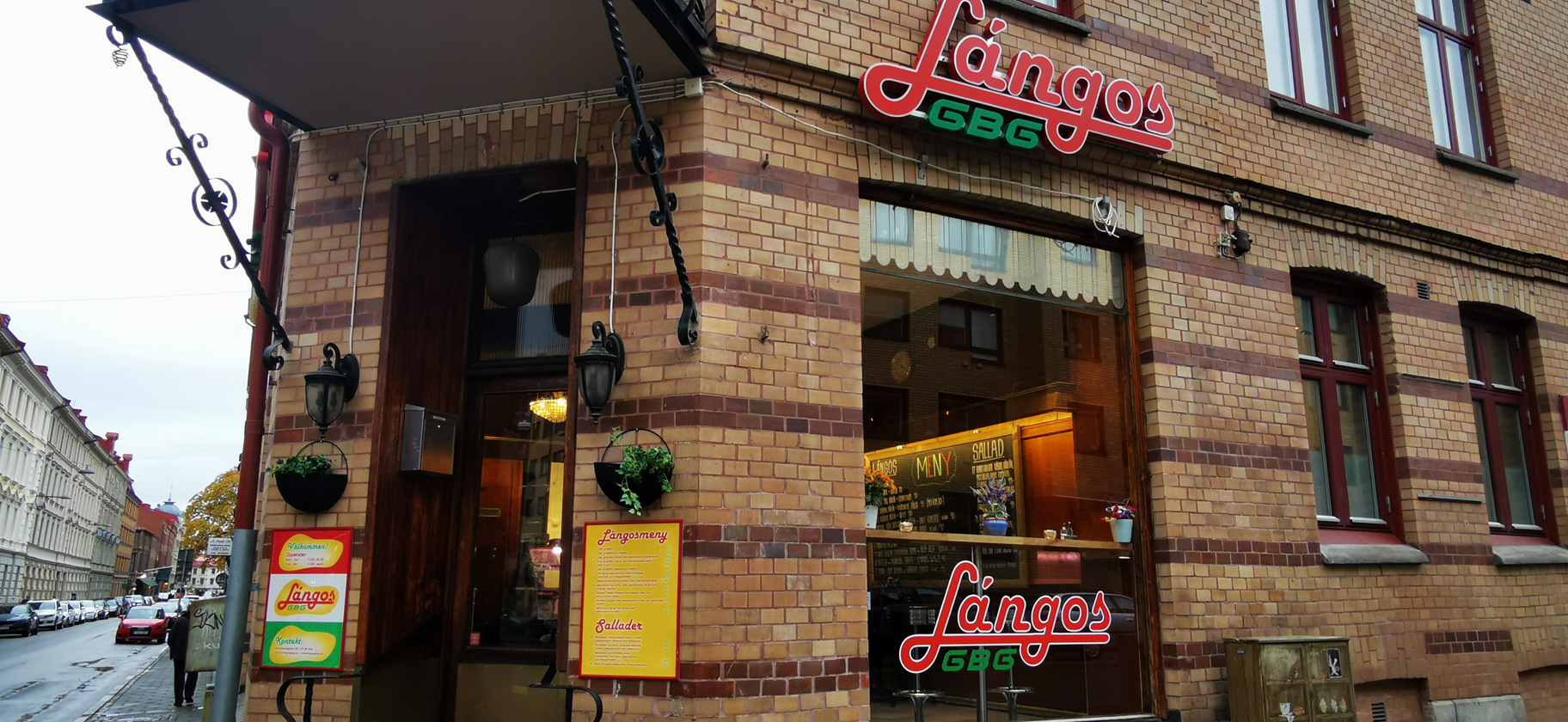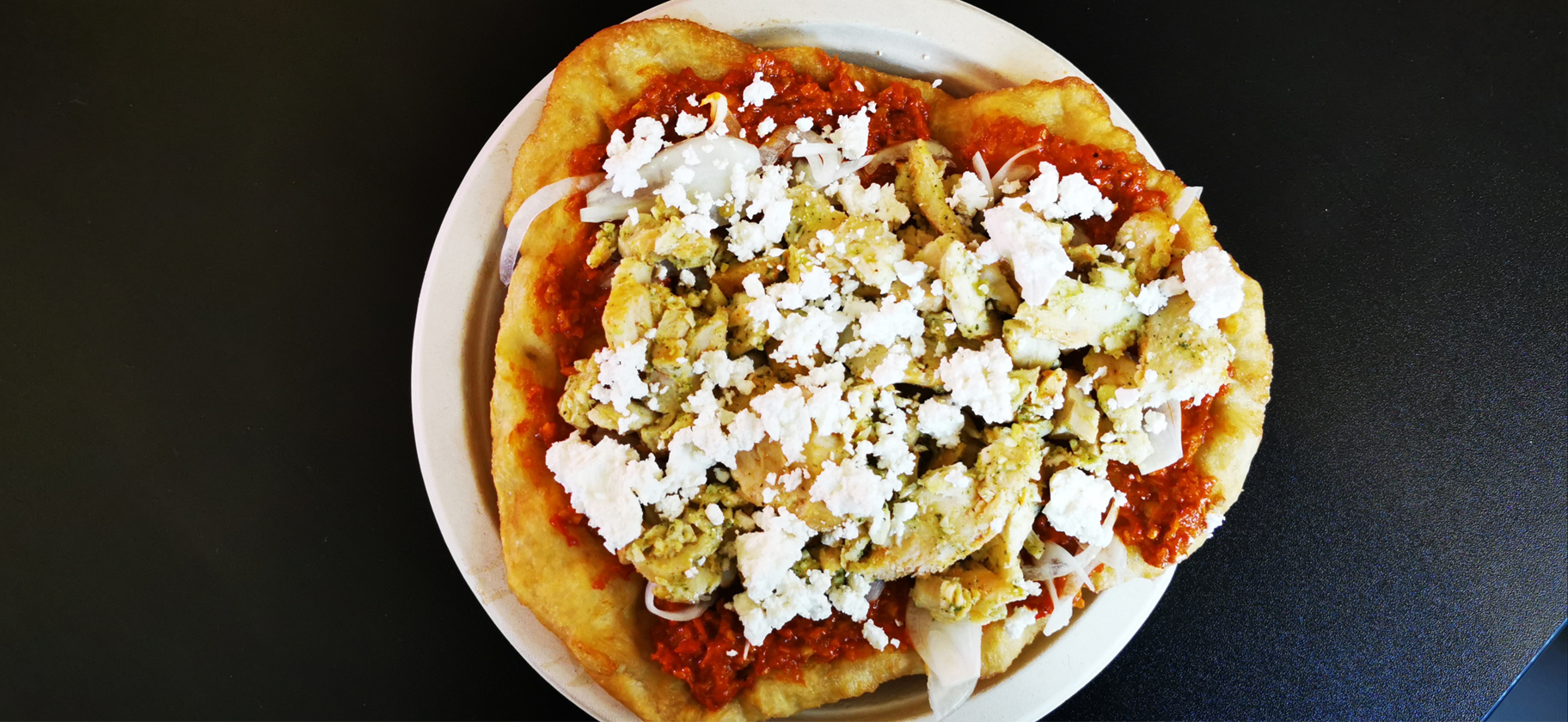Lángos Gbg

Every summer in the city of Gothenburg, a week-long festival takes place bringing together artists, musicians, culinary experts, weavers, and intellectuals for one of Scandinavia’s most popular cultural events of the year. To the dismay of the residents of Gothenburg, Kulturkalaset was cancelled in June due to the Covid-19 pandemic. Even in Sweden, where health officials took a different approach to handle the effects of the pandemic compared to much of the world and their own closest neighbours, it was not business as usual.
One of the highlights of the festival every year is the food trucks offering snacks and small meals from cuisines from all over the world. One particular favourite was the lángos truck that would routinely have a lineup around the block. Lángos is a Hungarian fast food item of fried pizza dough that has been brushed with garlic. It started as a peasant dish usually served alongside a hearty bean soup and was a particular favourite of mine when I was growing up. The thick parts of it are chewy and soft and the thin parts become crispy and the flavour is garlicky and salty – what’s not to love? One piece of lángos must be about a thousand calories, but they are delicious. Over the years, as incomes began to increase in Hungary and more diverse foodstuffs became available at markets, lángos became less an item you might find at a family dinner table and more an item that you would pick up for just a few forint at a railway station when changing trains.
When the cancellation of the festival was announced many wondered how they were going to cope without their yearly dose of lángos. Diana and her husband Oskar, disappointed by the news, took an alternative approach to how they would let it affect their lives. There was talk about travelling to Hungary just to get some but, at the time of the announcement, Swedes were still banned from travelling within the Schengen zone because of their lack of any lockdown measures. “Fuck it!” Oskar said, “Let’s just start our own food truck.”
Oskar, a native Slovenian, invested in the truck and the equipment needed to get their project off the ground, his wife and some of his closest friends hopped on board, and within a few days, they were on the road and parked at various locations in Gothenburg helping the locals get their summer dose of lángos. It was a huge success.
When autumn came they left the truck and rented a storefront in the Masthuggets district just west of the centuries-old Haga market street. Masthuggets is a vibrant and laidback area of the city where the streets are lined with old taverns, coffee shops, and ethnic restaurants. Lángos Gbg is the Hungarian representative in the area and the only Hungarian restaurant in Gothenburg. Open in the area for just over a month when I arrived, Lángos Gbg is a restaurant that serves just one thing – lángos.
Traditionally, lángos is served plain being only brushed with garlic and topped with a dash of salt, but in Hungary, it is also common to have lángos served topped with cheese and/or sour cream as well. In fact, over the years lángos has become a bit trendy and shops are beginning to sell lángos topped with onions, peppers, salami and all sorts of other goodies. Lángos Gbg is no exception in this area serving as many as 11 varieties of lángos.

On my first visit, I ordered the #1 served with cheese and sour cream. There was no point skipping ahead to the fancy stuff if they weren’t going to get the basics right. Fried in the back but topped right before your eyes, the finished product was light and a little bit crispy and served with heaps upon heaps of cheese. “So is it as good as in Hungary?” Diana asked me. I turned serious and was forced to explain, “Listen,” I say hoping my full explanation will soften the blow, “the lángos in Hungary is served with hundreds of years of tradition behind it. It is the highest level that no one should expect to achieve. But I assure you, this lángos is legit!”
When I returned the next day hoping to sample some of the other options on their menu I ordered the #8 which I called, The Diana. Though she was born and raised in Sweden, Diana is of Syrian descent and what she knows and appreciates about food she got from her grandmother. In Lángos Gbg, she has taken these traditions and fused them with lángos. The result is something you would never find in any fast food joint in Budapest.
The Diana is topped first with a sauce called paprikaröra which translates into English as “pepper mess”. It is a traditional Syrian condiment, similar to ajvar, made from crushed peppers, garlic and walnuts, that they make in-house. There is no other place in the world to have that sauce but at their restaurant. From there, The Diana is then topped with marinated chicken breast, red onions and feta cheese. Though the base of the dish is traditional lángos, the finished product is so far from anything I have ever tried in all of my visits to Hungary that it is a stretch for me to actually call it lángos. My own strict adherence to tradition, however, does not in any diminish how delicious this otherworldly creation was. Part Central Europe, part Middle East, and with a dash of Scandinavian ingenuity, The Diana proves that diverse cultures can live in harmony.

